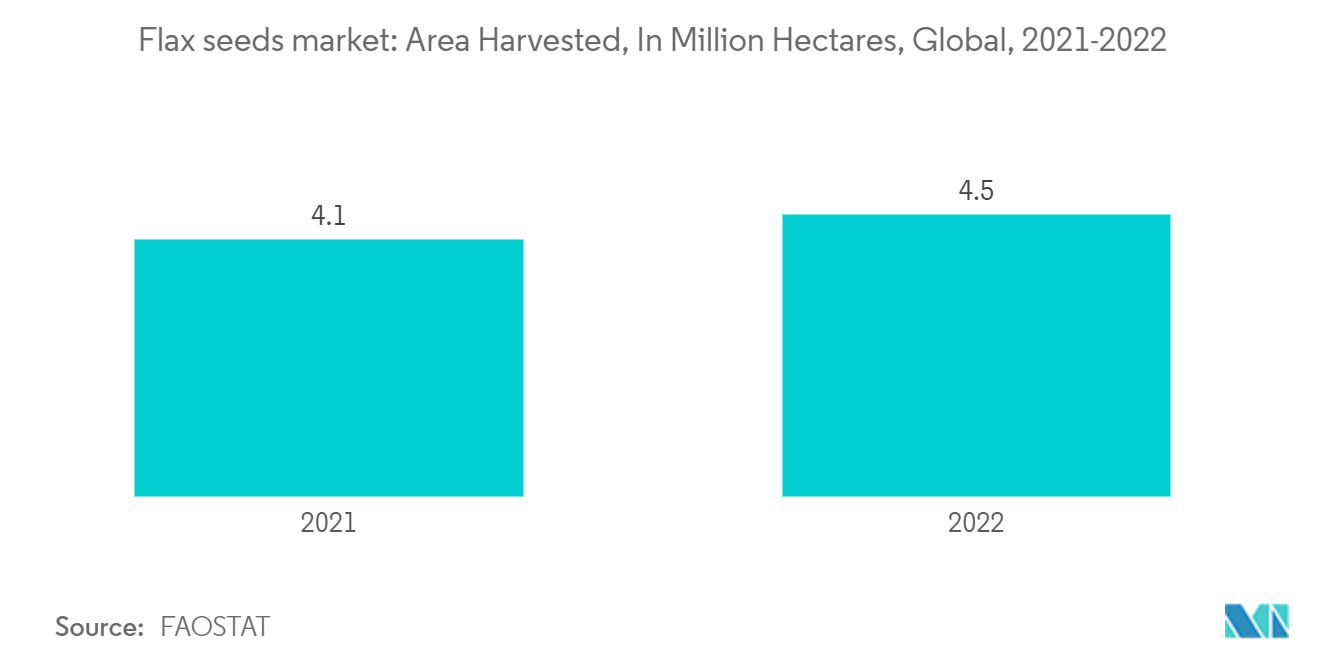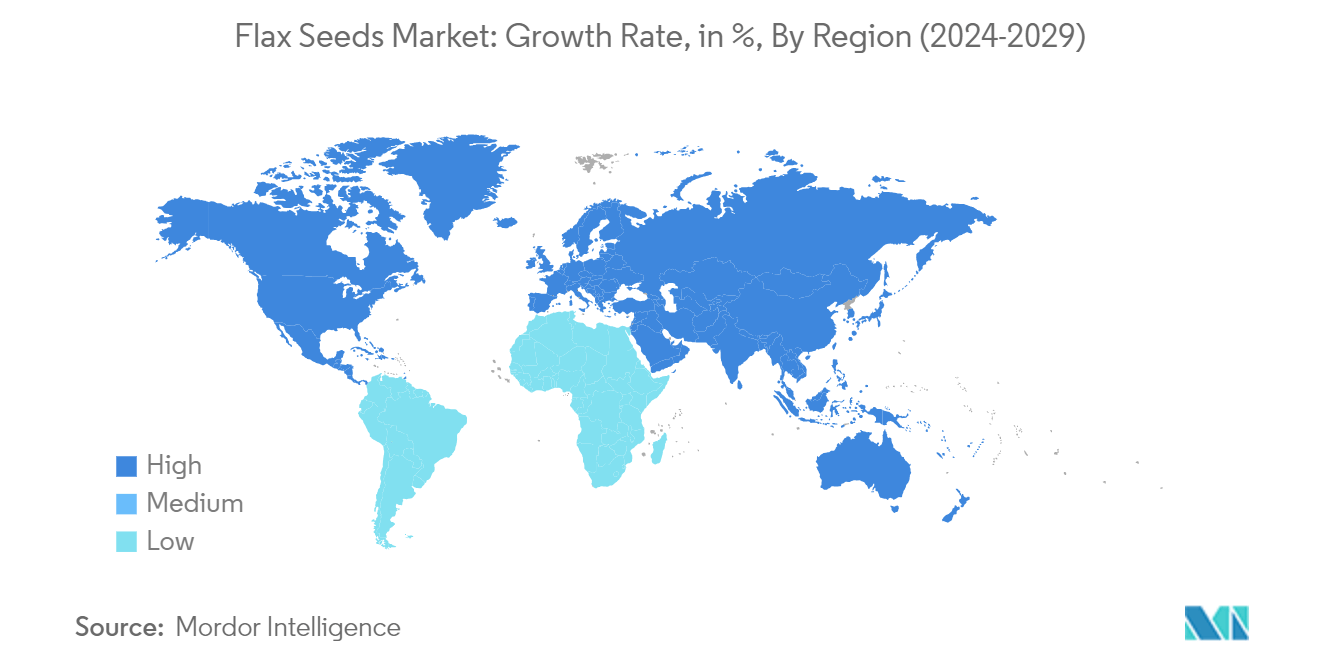Market Trends of Flaxseeds Industry
Rising Popularity of Super Foods
The popularity of super ingredients has increased significantly over the recent past as consumers are more inclined toward natural and wholesome ingredients. These products have superior nutritional value as they are rich sources of polyphenols, antioxidants, vitamins, and minerals. Due to the high dietary fiber content of flax seeds, antioxidants, and protein, regular consumption of flax seeds helps in good digestive functioning. Additionally, flax seed is one of the world's richest known plant sources of omega-3. It naturally contains 40% oil, of which 55% is Omega-3 essential oil that benefits both animals and humans, improving metabolic processes, stamina, immunity, etc. Furthermore, the increased availability of superfoods, including flax seeds in supermarkets, traditional grocery stores, and convenience stores, has also supported the market for flax seeds in developing countries over the past few years.
The increasing demand for flax seeds is causing them to compete with other superfoods such as chia seeds, hemp seeds, and quinoa. This competition is affecting the pricing strategies, leading to higher prices and contributing to the market's growth. According to the United States Bureau of Labor Statistics, the producer price index for flax seeds rose from 219.6 in April 2019 to 263.1 in April 2024. This increase in price index, along with the rising demand for the produce, is enhancing the market value of flax seeds, thereby propelling the market.
Moreover, as global demand for flax seeds surges, producers are expanding cultivation areas to meet this rising demand. According to FAOSTAT, the harvested area of flax seed increased from 4.1 million hectares in 2021 to 4.5 million hectares in 2022 across the world. Therefore, the increasing demand for flax seeds due to associated health benefits and usage as superfoods, along with rising production areas and growing prices, is anticipated to drive the flax seed market.

Asia-Pacific is Expected to Lead the Flax Seeds Market
Asia-Pacific is the largest flaxseed-producing region in the world. The trend toward preventive healthcare and natural remedies has led to a greater emphasis on incorporating superfoods like flax seeds into daily diets. This has pushed renowned brands to launch new products, thereby aiding the market's growth. In 2021, India Gate Basmati Rice, India's first integrated rice brand, launched two new additions in the domestic market to its healthy foods branded portfolio, namely Wholesome Health Special Chia Seeds and Active Heart Special Roasted Flax Seeds. This kind of product launch targets health-conscious customers, thereby aiding the market's growth.
Kazakhstan, China, India, Australia, and Iraq are the major producers and consumers of flax seeds in the region. Kazakhstan alone accounts for about 33.8% of the total harvested area, with over 1.34 million hectares in 2022, according to the FAOSTAT. The rising production globally and growing demand for flax seeds have increased its export potential over the past few years, which is supporting the market's growth. According to the ITC Trade Map, the value of linseed exports in Kazakhstan has increased by over 26.8% between 2019 and 2023, reaching USD 227 million in 2023. This rising export value is expected to support the market for flax seeds in the coming years.
Along with this, Asia-Pacific is also the largest consumer of flax seeds due to the presence of large populated and developing countries such as India and China. This supports the imports of the produce in the countries, thereby aiding the consumption. As per the ITC trade map, the imports of flax seed grew from 614,570 metric tons in 2022 to 1,220,034 metric tons in 2023. The demand is further anticipated to increase due to the rise in disposable incomes and the increasing demand for healthy foods in the region in recent years. Therefore, the increasing export value of flax seeds, consumption, and rising disposable incomes are anticipated to drive the flax seed market.


